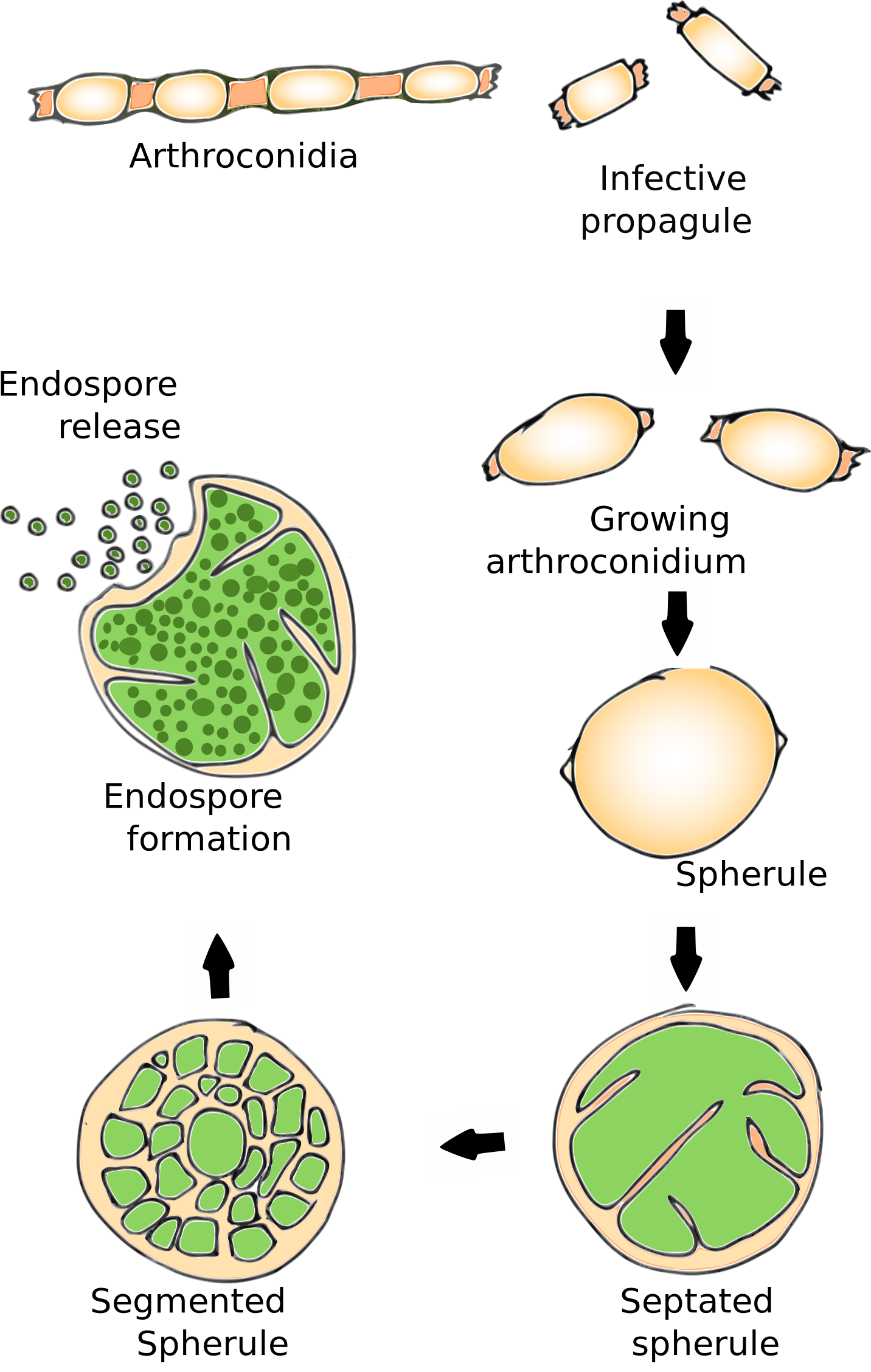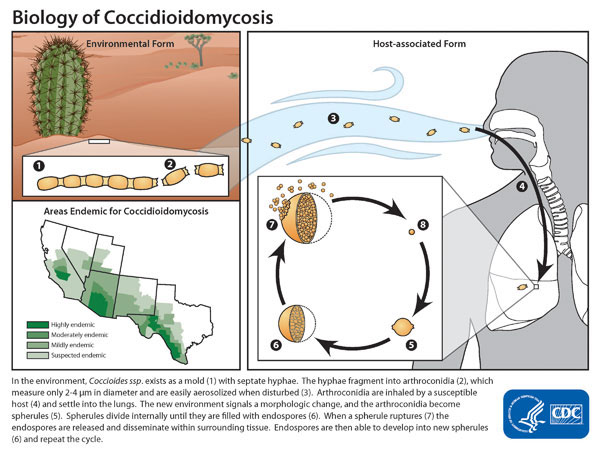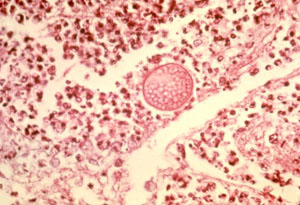Coccidioidomycosis pathophysiology: Difference between revisions
Jump to navigation
Jump to search
Aditya Ganti (talk | contribs) |
Aditya Ganti (talk | contribs) |
||
| Line 23: | Line 23: | ||
*Dissemination usually occurs via the lymphatics and is more common in immune suppressed in whom the primary infection is not contained. | *Dissemination usually occurs via the lymphatics and is more common in immune suppressed in whom the primary infection is not contained. | ||
Image:Coccidioidomycosis-lifecycle.jpg|Life cycle and epidemiology | [[Image:Life cycle of coccidioides.svg.png|center|Life cycle of coccidiodes]] | ||
[[Image:Coccidioidomycosis-lifecycle.jpg|Life cycle and epidemiology]] | |||
[[Image:Microscopy valley fever.jpg|Histopathological changes in coccidioidomycosis]] | |||
Revision as of 19:12, 8 March 2017
|
Coccidioidomycosis Microchapters |
|
Diagnosis |
|---|
|
Treatment |
|
Case Studies |
|
Coccidioidomycosis pathophysiology On the Web |
|
American Roentgen Ray Society Images of Coccidioidomycosis pathophysiology |
|
Risk calculators and risk factors for Coccidioidomycosis pathophysiology |
Editor-In-Chief: C. Michael Gibson, M.S., M.D. [1]; Associate Editor(s)-in-Chief: ; Vidit Bhargava, M.B.B.S [2]
Pathogenesis
The pathogenesis of coccidiodomycosis can be described in following steps.
Transmission
- Coccidioiodomycosis exist as mycelia in the soil with septations.
- During hot climate or dry environment, they proliferate asexually, transforming into spores, known as arthroconidia.
- Infection is caused by inhalation of these arthroconidia. The disease is not transmitted from person to person.
Incubation period
- Incubation period of coccidioidomycosis varies from one to three weeks.
Dissemination
- Following transmission, coccidioidomycosis are deposited into terminal bronchioles and enlarge, become rounded and develop internal septations to form what are known as the spherules.
- It then disseminates to the lymphatics and blood stream to gain access to any organ of the body.
Seeding
- Spherules contain uni-nuclear cells called as endospores which may propagate the infection further as they have the capability to develop into spherules.
- This conversion of anthroconidia into spherules initiates an inflammatory reaction and leads to a chemotaxic response (peptides derived from activation of the complement pathway, leukotrienes ) which attracts neutrophils and eosinophils to the site of inflammation.
- Cell mediated immunity keeps the infection in check and keeps them limited to the organ of origin by forming granulomas.
Immune response
Coccidioidomycosis elicits cell-mediated immune responses.
- Delayed type hypersensitivity to coccidioidal antigens is common after acute infection has resolved.
- Dissemination usually occurs via the lymphatics and is more common in immune suppressed in whom the primary infection is not contained.

The infection starts in the lungs. There are three forms of coccidioidomycosis: acute, chronic, or disseminated.
- Acute pulmonary coccidioidomycosis. It almost always mild, with few or no symptoms, and goes away without treatment. The incubation period -- the time between breathing in the spores and becoming sick -- is 7 to 21 days.
- Chronic pulmonary coccidioidomycosis can develop 20 or more years after initial infection. Infections (lung abscesses) can form and rupture, releasing pus (empyema) between the lungs and ribs (pleural space).
- Disseminated coccidioidomycosis is a widespread form of the disease. Infection spreads to other parts of the body, including the skin, brain, bones, and heart. Meningitis occurs in up to half of all people with disseminated coccidioidomycosis.
Microscopic Pathology
{{#ev:youtube|RtpvzCfFwfg}}

